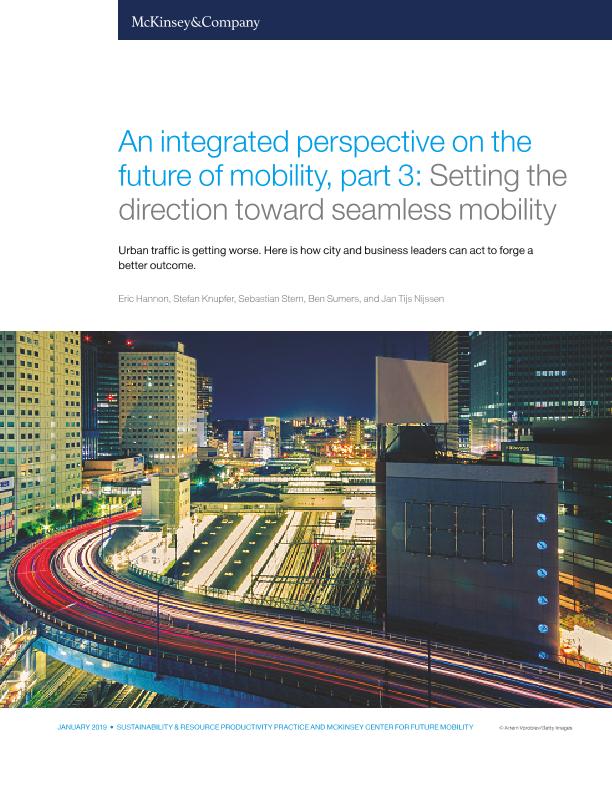An Integrated perspective on the future of mobility, part 3 : setting the direction toward seamless mobility

Contenido multimedia no disponible por derechos de autor o por acceso restringido. Contacte con la institución para más información.
| Tag | 1 | 2 | Value |
|---|---|---|---|
| LDR | 00000cam a22000004b 4500 | ||
| 001 | MAP20190001687 | ||
| 003 | MAP | ||
| 005 | 20190123132757.0 | ||
| 008 | 190121s2019 usa|||| ||| ||eng d | ||
| 040 | $aMAP$bspa$dMAP | ||
| 084 | $a852 | ||
| 245 | 1 | 3 | $aAn Integrated perspective on the future of mobility, part 3$b: setting the direction toward seamless mobility$cEric Hannon... [et al.] |
| 260 | $aNew York$bMcKinsey & Company$c2019 | ||
| 300 | $a17 p. | ||
| 490 | 0 | $aSustainability & resource productivity practice and McKinsey center for future mobility$vJanuary 2019 | |
| 520 | $aUrban traffic is getting worse. Here is how city and business leaders can act to forge a better outcome. The age of modern transit began in 1863, when the first underground railway began rolling in central London. The line was short and smoky, and nothing like it had ever been seen before. But it worked, and cities around the world began to follow London's lead. Over time, city authorities came to see providing transportation as one of their core responsibilities, and governments often owned and ran transit systems themselves | ||
| 650 | 4 | $0MAPA20110017835$aMovilidad | |
| 650 | 4 | $0MAPA20090014190$aMovilidad urbana | |
| 650 | 4 | $0MAPA20080613303$aCirculación de vehículos | |
| 650 | 4 | $0MAPA20080545598$aTráfico | |
| 650 | 4 | $0MAPA20080611996$aPolítica de transportes | |
| 650 | 4 | $0MAPA20080610869$aFenómenos de transporte | |
| 650 | 4 | $0MAPA20080588519$aTransporte público | |
| 650 | 4 | $0MAPA20080552879$aUrbanismo | |
| 700 | 1 | $0MAPA20160013085$aHannon, Eric | |
| 830 | 0 | $0MAPA20190000772$aSustainability & Resource Productivity |

